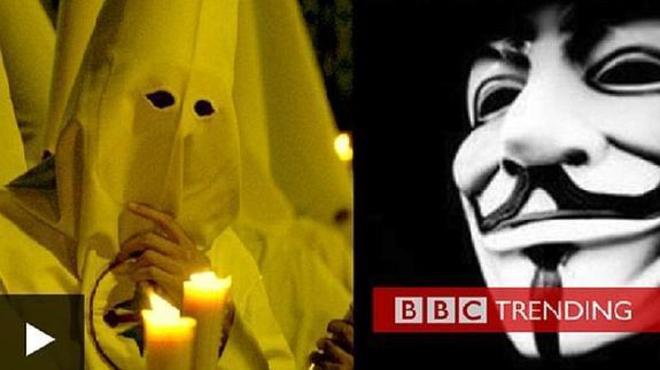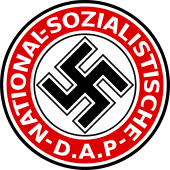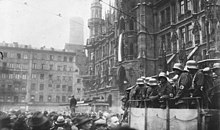Montuno
...como el Son...
they used to march like that through Birmingham Alabama. get their ass handed to them trying to pull that shit in public these days...
What is the meaning of the Nazarene capirote?
Curiously, its origin is closely related to the penitence of sins in the Catholic religion. ... The conical shape of the hood alludes to the penitent's approach to heaven and the cloth that falls over the face and chest, the hood, serves to hide the face and preserve the identity of the penitent.
What does the Nazarene hood symbolize?
Also known as capuces or capuchones, the capirote is reminiscent of the obligatory complement that accompanied those condemned by the Inquisition as penance for certain crimes, thus reminding both them and the rest of society what infraction had been committed and the punishment for it.
EL MUNDO:
The brotherhood of San Gonzalo requests a rectification from the BBC
How does a Nazarene from Seville look like a racist from the Ku Klux Clan?

THE WORLD
The BBC uses an image of a penitent from the brotherhood of San Gonzalo de Sevilla in a report on the Ku Klux Clan.
It is not the first time that ignorance of the brotherhood culture causes an inexplicable confusion.
- THE WORLD
- Seville
On this occasion, the blunder of the BBC public television seems unwanted but it reflects the enormous ignorance that continues to exist of the rituals and uses of Holy Week in Spain, and especially in Andalusia, in addition to being a sign of popular religiosity, it is also a folkloric and cultural manifestation that attracts tourists from all over the world.
The information from the BBC referred to the campaign carried out by the network movement known as Anonymus , which has published a list on the Internet with alleged followers of the racist organization Ku Klux Klan. The editor of the news of the British station used to illustrate it the image of a Nazarene of the brotherhood of San Gonzalo de Sevilla, one of those that makes penance station in the capital, based in Triana.
The confusion has led to a condemnation statement from the brotherhood, which has announced that it will ask the chain to publicly rectify its error.
"The Brotherhood of San Gonzalo regrets the unfortunate occurrence or supine ignorance of the British network BBC in confusing the Nazarene habit of our corporation, a symbol of Christian penance, with the clothing behind which the members of a violent and xenophobic organization hide . Of this unfortunate confusion, the Brotherhood will inform said chain so that it can make public the rectification of its error", it has announced through its website.
Likewise, the General Council of Brotherhoods and Brotherhoods will be informed, as representative of all the corporations of penance, sacramentals and glory of the city of Seville, so that it can take the measures it deems appropriate in the defense of our faith and our traditions. , often mocked and attacked".

The
fake 'sexy' priest :
But it is not the first time terms and images related to Seville's Holy Week have been used for unusual purposes. In 2008, an acolyte of the brotherhood of Thirst was involuntarily seen as part of the calendar that an Italian publisher puts out for sale every year with images of the allegedly sexiest priests of the year.
David Ruiz is not a priest nor had he ever given his consent for his photo to appear in the aforementioned publication. In fact, at that time he was working for a real estate agency. But his portrait, taken during his participation in a procession of the brotherhood of La Sed two years earlier wearing the acolyte's attire (with functions similar to those of an altar boy), made the magazine's editors think that it was a priest and as such they published the photo without the slightest verification. With his image they illustrated the month of March. And the one in April also had an involuntary protagonist: another acolyte, this time from Santa Genoveva , who accompanied the Virgen de las Mercedes was chosen. Also, of course, unknowingly.
The Virgin Uma Thurman :
Recently, the Sevillian brotherhood world was also shocked by the use that the actress Uma Thurman made of religious symbols as a costume during a meeting with friends in a traditional Sevillian cocktail bar.
The images of the actress disguised as the Virgin with all her attributes (crown, mantle and even false tears) and posing with her hands together as Mary is represented, amid the laughter of her companions, began to circulate through the networks after reveal them in the local newspaper Centro Histórico. The director of the Andalusia Film Commission, Carlos Rosado, had reported days before that Thurman was in Seville to attend the wedding of some of her friends.
19 Comments
6
11/10/2015 1:06 p.m.The BBC must monitor its journalistic level.
5
11/10/2015 1:03 p.m.In the cap, but from the tip of the cap to the feet, inside it they have nothing to do with each other, it is form and substance or container and content. But come on, I would not recommend a brother to take the suit to the USA.
https://www.elmundo.es/andalucia/201...1628b462e.html















